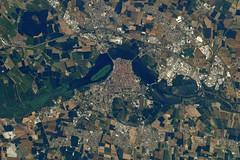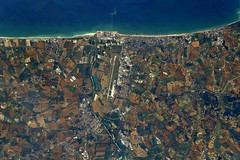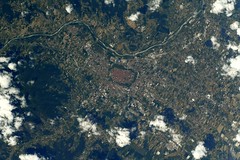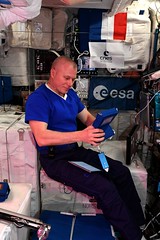Thomas Pesquet posted a photo:
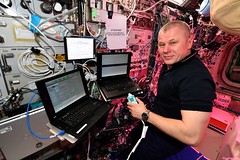
Oleg travaille à nouveau sur l’expérience PK-4. La plupart des expériences à bord de la Station exploitent le fait qu’on RESTE en impesanteur pour une durée prolongée. Explications : il existe d’autres façon de recréer des conditions de 0G plus près du sol, par exemple les vols paraboliques :airplane: ou encore plus simplement en laissant tomber des objets de très hauts (dans des tours de chute par exemple). Ça fonctionne pour plein d’expériences, mais ça ne donne que quelques secondes d’impesanteur à chaque fois, alors que dans la Station ça dure depuis plus de 20 ans :smiley: Souvent, les expériences à bord sont prévues pour opérer pendant plusieurs semaines ou même plusieurs mois de suite, et notre boulot consiste pour certaines à changer les échantillons ou les batteries, ou à modifier certains paramètres… parfois même on doit simplement s’assurer que tout se passe bien ! PK-4 est l’une des plus vieilles expériences ici, et c’est un bel exemple de coopération internationale puisqu’elle est conduite par des équipes allemandes :de: et :ru: russes, et qu’elle est accompagnée au sol par le CADMOS, au @CNES de Toulouse :fr:. missionalpha.cnes.fr/fr/plasma-kristall-4-la-matiere-dans...
Oleg working on PK-4 again. Many, if not most of the experiments we run on the International Space Station exploit the longevity of the weightlessness here. We can recreate zero gravity closer to Earth on parabolic flights ✈ or by simply dropping things :tokyo_tower:, but these options only give seconds of weightless research time, whereas we have been going strong for over 20 years now. Researchers often design their experiment to run for weeks or even months, and we step in to change samples, change parameters or just keep an eye on things. It is fascinating to think that we are recreating structures like atoms to understand better the world we cannot see. PK-4 is actually one of the longest running experiments too, but also very international, it started as a German-Russian cooperation and is now @ESA-@Roscosmos and controlled by CADMOS in Toulouse, France! www.esa.int/Science_Exploration/Human_and_Robotic_Explora...
Credits: ESA/NASA–T. Pesquet
607F5153
